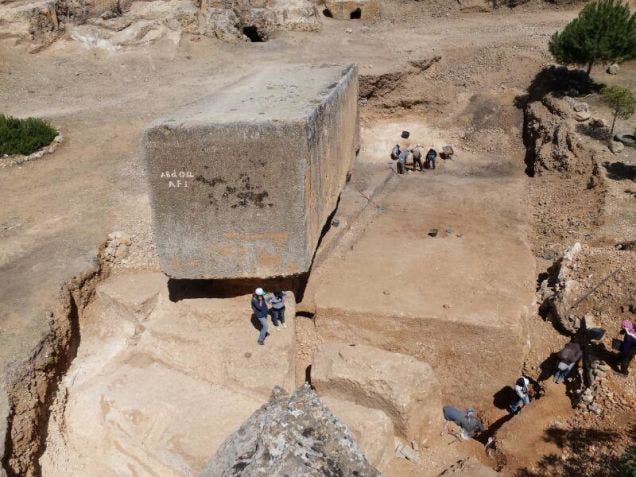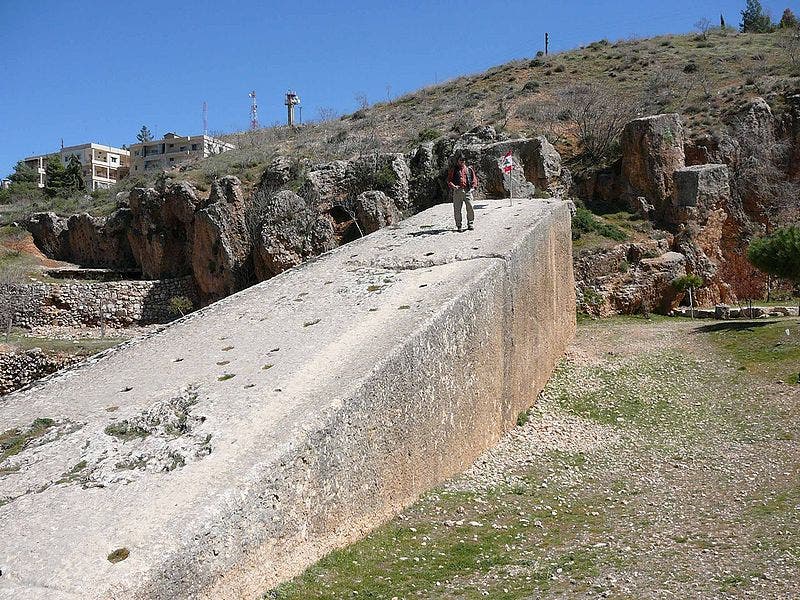Look at this incredibly big rock. Take a moment, ponder its dimensions, and its weight. Oh, but if you’re looking at the one in the middle, that’s not it – look over to the right. The one to the right, not fully excavated yet, is the biggest ancient stone block, weighing an impressive 1,650 tons (that’s 3,300,000 pounds, or 1,496,850 kg).

The year is 27 BC – the Roman Empire is in its more developed stages, and Lebanon is one of the most thriving areas on the planet. The place is the Baalbek site in Lebanon – a well known and studied site. It’s not completely unexpected to find huge monoliths in the area, but German archaeologists weren’t expecting something quite as big – 19.6 meters (64 feet) in length, 6 meters (19.6 feet) wide, and is at least 5.5 meters (18 feet) high.
The aim of this year’s excavations was to find new data about the mining techniques and the transporting of the megaliths. At the same site, archaeologists discovered an already famous monolith – “Hajjar al-Hibla”. Hajjar al-Hibla is called The Stone of the Pregnant Woman or Stone of the South. It’s a Roman monolith from granite. Its exact purpose is still a matter of debate.

Judging by this stone’s level of smoothness and configuration, it seems likely that it was meant to be transported without being cut. While techniques have been described for transporting the huge rocks, it’s still not clear how ancient Romans used to carry them. The next goal is to figure out how they transported them and why the rock still remained in the quarry.
Story via Deutsches Archäologisches Institut.






